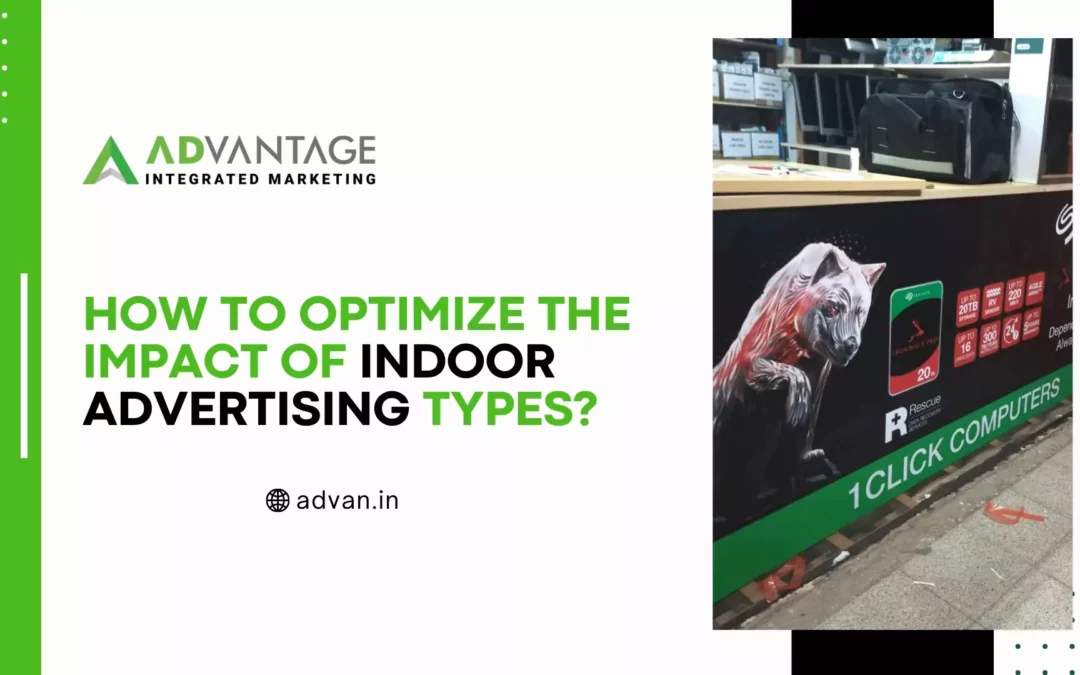Have you ever walked past a store and found yourself irresistibly drawn to its display? That’s the power of visual merchandising at work in retail spaces. Visual merchandising is the practice of designing and arranging products in a retail space to enhance their appeal and attract customers.
It’s an art that combines aesthetics, psychology, and marketing strategies to create an environment that not only reflects the brand’s identity but also stimulates and engages the customer. This practice turns a store into a vivid story that speaks to the hearts and minds of the shoppers, inviting them to step in and experience what the brand has to offer.
This blog will discuss in detail about the key elements of visual merchandising in retail management.
How components of visual merchandising in retail management works?
The benefits of visual merchandising are numerous and impactful. It significantly increases customer traffic. A well-designed store window or an engaging display can grab the attention of passersby, turning them from casual onlookers into potential customers. Hence it is very crucial to identify the elements of visual merchandising when you plan a retail store.
Customer Experiences
Visual merchandising enhances the customer experience. It creates a pleasant and memorable shopping environment that can make shopping more enjoyable, encouraging customers to spend more time in the store.
Brand Reinforcement
Visual merchandising aids in brand reinforcement. A store that consistently uses certain colors, themes, or styles in its displays communicates its brand identity more effectively, helping to build brand recognition and loyalty among customers. It also facilitates inventory management. By regularly updating displays, retailers can keep their stock fresh and reduce inventory stagnation. Lastly, visual merchandising serves as a silent salesperson.
Differentiation from Competitors
Through visual merchandising, a brand can develop a distinct and identifiable identity. A brand can differentiate itself from competitors by employing recurring colors, themes, and styles in its displays and store layouts. This helps consumers recognize the brand immediately. Customers are more likely to return and refer others to the store when they see displays that are eye-catching and unique.
Optimizing Store Layout
Products and promotional materials can be displayed prominently in an optimized store layout, which increases the likelihood that customers will notice them. It is easy to navigate a retail store when there are clearly marked pathways. The whole customer experience can be improved by designing a store layout that is welcoming and well-organized. It is possible to increase customer satisfaction and return business by simplifying the product search process for customers in a well-organized retail space. Optimizing the layout in a retail setting can direct customers through the store in a way that maximizes product exposure and promotes impulsive purchases.
Triggering Purchase
Through creative displays and strategic product placement, it can communicate information about products and promotions, guiding the customer’s purchasing decisions. Effective visual merchandising can lead to increased sales. By strategically displaying products, retailers can highlight specific items, promote new or seasonal products, and encourage impulse purchases.
Elements of Visual Merchandising
What are the key elements of visual merchandising?
Now, let’s delve into the heart of the blog, which can be broadly classified into four elements of visual merchandising.
- The store exterior which covers marquees, window displays and entrance
- The store layout which includes selling space, personnel space and merchandising space
- The store interior which emphasizes the store design like floor, wall, fixtures and lighting
- The interior display of the merchandise
Let’s now go into the top ten elements of visual merchandising in retail management that will give you a clear understanding.
Store Layout
The store layout is the foundation of visual merchandising. An intelligently designed store layout enhances the overall shopping experience, making it more enjoyable and efficient for customers. A well-planned layout can encourage customers to stay longer, explore more, and return for future visits.
It should be intuitive, guiding customers effortlessly through the store. The layout needs to balance aesthetics with functionality, ensuring that products are accessible and the space is easy to navigate. It should also be adaptable to accommodate changes in inventory and seasonal promotions.
By placing eye-catching displays, focal points, or themed zones strategically to capture customers’ attention and promote exploration, store layouts can effectively engage customers. Product visibility and ease of finding are guaranteed by well-designed store layouts. Important products or special offers are frequently positioned in busy places to get the most attention. Customers can navigate more easily with the help of directional signage, well-marked aisles, and clear pathways.
Cross-selling and upselling opportunities can be facilitated by strategically placing complementary products close together in a well-designed store layout.
Customers can find specific items more easily when a store is organized into departments or product categories. Customers can shop more effectively and with greater organization thanks to this segmentation.
Efficient store layouts help manage inventory effectively by optimizing shelf space, reducing congestion in storage areas, and ensuring that products are readily available for restocking. Retailers can adapt their store layouts to align with evolving trends in consumer behavior, technology, and shopping preferences, ensuring that their stores remain relevant and appealing.
Window Displays
An engaging and well-designed window display creates a positive first impression of the store. They should be eye-catching and reflect the essence of the brand. Effective window displays tell a story or convey a theme, creating curiosity and drawing customers inside. They often showcase new arrivals, bestsellers, or seasonal items.
Window displays are an opportunity to reinforce the brand’s identity and image. By aligning the display with the brand’s values, aesthetics, and messaging, retailers can strengthen their brand recognition. They highlight featured products, new arrivals, or seasonal trends. They provide a platform to showcase merchandise in an attractive and aspirational manner.
Retailers frequently change their window displays to correspond with particular holidays, seasons, or promotions. This encourages customers to return by keeping the store’s exterior interesting and fresh. Customers can learn about the features, advantages, and applications of products through window displays. Customers can make educated purchasing decisions with the aid of informative displays.
By combining complimentary items, retailers can use window displays to cross-promote specific products or categories. Customers are encouraged to explore the store’s various sections as a result. Thanks to technological advancements, interactive window displays can engage customers with immersive experiences via touchscreens, augmented reality, or QR codes.
Colour
Color schemes have a significant influence on perception and mood and is one of the vital elements of effective visual merchandising that can improve product appeal and establish the desired atmosphere in a retail setting is the appropriate choice of colors.
An essential component of a brand’s identity is its color palette. Using particular brand-associated colors consistently aids in helping customers recognize and recall the store.
In a retail setting, colors elicit feelings and create a certain atmosphere. Cool hues like blue and green can suggest serenity and reliability, while warm hues like red and orange can evoke a sense of urgency and excitement. Retailers can match the atmosphere they want for their store by strategically using color. For an elegant atmosphere, a high-end boutique, for example, might use neutral colors.
Sale signs and featured items can be made to stand out with a vivid, contrasting color, which increases the likelihood that customers will notice and interact with them. The use of color to distinguish between various departments or areas within the store can aid in directing customers as they browse.
The store can appear more welcoming and visually appealing by using color schemes that complement one another or that are consistent with the brand’s theme.
Coordinating the colors used in packaging and store design can create a cohesive and memorable brand image. Retailers should consider the accessibility of color schemes, ensuring that signage and labels are easy to read and understand, especially for individuals with color vision deficiencies.
Lighting
In order to draw attention to products and create a welcoming atmosphere, lighting is essential as one of the essential elements of visual merchandising. It should draw attention to the merchandise, bring out the colors, and enhance the store’s atmosphere. Highlighting certain goods, sales, or advertising displays can be accomplished with the right lighting. Customers’ attention is drawn to and encouraged to interact with the brand’s offerings by well-lit featured items.
In retail stores, lighting establishes the tone and fosters a welcoming environment. Customers’ overall experience can be improved by the lighting design, which can create a welcoming and comfortable atmosphere.
Theme and Style
Keeping the theme and style constant guarantees that the brand message is coherent and understandable through all media. Your visual merchandising efforts will be better defined and reinforced if you have a consistent theme and style. Your theme and style should complement your brand’s values and target demographic, whether that means going for a sleek, modern look or a more cozy, traditional one.
Your displays and ads can be made more visually appealing with a well-defined theme and style, which will draw viewers in and raise the likelihood of engagement. Narrating a Tale: A story about the goods or services your brand provides can be told or a narrative can be conveyed with the aid of clearly defined themes and styles. It is possible to modify themes and styles to fit seasonal or marketing campaigns.
Landscaping
A retail store’s exterior is what prospective customers see first. Curb appeal can be increased with well-planned landscaping that creates an aesthetically pleasing and welcoming entrance. It might draw people in and entice them to check out what the store has to offer by acting as a magnet.
Additionally, landscaping can influence the retail space’s ambience and mood, acting as one of the crucial elements of retail merchandising. Alligning with the store’s brand and target demographic, different landscaping configurations can produce a variety of atmospheres, from a laid-back garden-like setting to a modern, minimalist design.
With the help of landscaping, it is possible to designate outdoor seating areas where patrons can unwind, take in their surroundings, and possibly extend their stay near the store.
All things considered, landscaping enhances a satisfying and unforgettable client experience. It produces a lovely, positive and memorable customer experience. It creates a pleasing environment that encourages customers to explore the store and potentially make purchases.
Texture
Textures give interiors and store displays depth and visual appeal. Using a variety of textures, such as glossy, matte, smooth, or rough surfaces, can draw customers in and improve the store’s aesthetic appeal.
Customers can engage with products through tactile interaction thanks to the use of textures. Products with intriguing textures may entice customers to touch and feel them more, strengthening their bond with the brand. Various atmospheres and moods can be evoked by different textures. While smooth, reflective surfaces may help to create a more modern and upscale atmosphere, soft, plush textures can help to create a warm and inviting space.
The general customer experience can be improved by using cozy and welcoming textures in waiting areas, changing rooms, and seating areas. Upholstered, soft textures can evoke feelings of comfort and relaxation.
Textures that are soft and upholstered can induce calm and relaxation. Through tactile and visual cues, textures influence customers’ perceptions of brands and help with sensory branding. Branding materials, packaging, and store interiors with uniform textures can strengthen the brand’s identity.
Decor
The theme and atmosphere of the retail space are established by decor elements. The tone of the shopping space is set by decor items like wall art, lighting fixtures, and furniture, regardless of the theme—minimalist, rustic, vintage, or modern. They can support the identity and core principles of the brand. Using design components consistently with the brand’s image can make it easier for consumers to recognize and relate to the brand.
Decor pieces that draw the eye, like sculptures, paintings, or distinctive fixtures, can draw customers in and entice them to spend more time in the store. A well-thought-out window display or ornamental signage, for instance, can serve as the center of attention for special offers or products. Retailers frequently change up the décor to coincide with promotional events, holidays, and seasons, giving the space a dynamic and appealing feel.
Signage and Graphics
Signage and graphics serve as visual communication tools. They provide information, direct attention, and add to the store’s visual appeal. Signage and graphics are powerful tools for reinforcing a store’s branding and identity. The use of consistent fonts, colors, and logos across signage helps customers recognize and remember the brand.
Signage provides essential product information, including prices, features, and benefits. Well-designed graphics can convey product details effectively, assisting customers in making informed purchasing decisions. Retailers use signage and graphics to promote sales, discounts, and special offers. Eye-catching graphics and bold signage can draw attention to these promotions and encourage impulse purchases.
Clear and well-placed directional signs help customers find specific departments, restrooms, fitting rooms, and exits, improving their shopping experience. With advancements in technology, interactive signage and graphics can engage customers through touchscreens, QR codes, or augmented reality, allowing them to explore products and access additional information.
Product Grouping and Placement
How products are grouped and placed can significantly influence purchasing decisions. Placement at eye level or in high-traffic areas can increase product visibility.
Carefully grouping and placing products creates an organized and enjoyable shopping experience for customers. It helps them easily locate items of interest and navigate the store efficiently. Grouping complementary products together can encourage customers to purchase additional items. For example, placing matching shoes next to dresses or suggesting accessories near clothing can lead to higher sales.
Creating visually appealing product groupings or displays can capture customers’ attention and make them more likely to explore and make unplanned purchases. Well-organized product placement simplifies the shopping process. Customers can quickly locate the items they need without feeling overwhelmed or lost in the store.
Thoughtful product placement can influence the flow of customer traffic within the store. Retailers can strategically position high-margin or seasonal items along the main pathways to capture attention. Strategic product placement can help manage inventory efficiently. Retailers can prioritize the sale of overstocked or seasonal items by placing them prominently.
Tips for Stunning Visual Merchandising
To excel in visual merchandising in retail stores, consider these ten tips:
- Keep the target customer in mind when designing displays.
- Regularly update displays to maintain customer interest.
- Use varying heights and depths to create visually interesting displays.
- Ensure that the store’s theme aligns with the brand identity.
- Utilize space efficiently, avoiding cluttered or sparse arrangements.
- Incorporate interactive elements to engage customers.
- Balance creativity with simplicity to avoid overwhelming the customer.
- Pay attention to details like cleanliness and maintenance.
- Train staff on the importance of visual merchandising.
- Monitor customer responses and sales data to refine strategies.
How can AD Vantage help you in visual merchandising?
AD Vantage, one among the best retail branding agency creates captivating environments in retail spaces. With an acute awareness of consumer behavior and market trends, we create custom visual merchandising solutions that appeal to the target market for the brand. Their specialty is designing displays that are not only gorgeous to look at but also tactically sound in terms of boosting sales and improving brand perception. In order to guarantee a seamless and memorable client experience, we offer comprehensive approach, taking into account all elements of visual merchandising.
In a nutshell, elements of visual merchandising involves more than just arranging products; it involves developing an immersive experience that engages consumers emotionally. Through the strategic application of visual merchandising elements, retailers can craft a captivating story that draws in and keeps customers. Understanding visual merchandising can significantly impact retailers in the competitive market of today, where customer experience is of utmost importance. It’s an investment that yields long-term brand recognition and loyalty in addition to immediate sales gains.
Want to know about the latest trends in advertising? Follow us on Instagram.
View this post on Instagram
Let’s together create magic








0 Comments